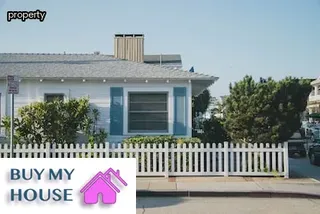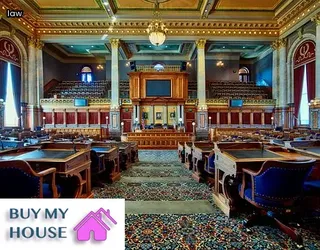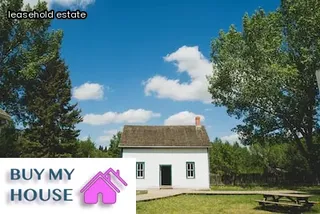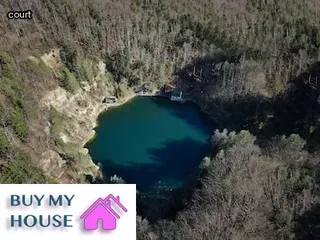Renting a home in a global city can be an incredibly expensive and complicated endeavor. Living conditions vary greatly depending on the area and the price you pay.
It is important to understand what makes a house unlivable before signing any rental agreements or signing up for long-term leases. Knowing what to look for when it comes to living conditions can help you determine if a property is right for you.
Global cities are known for their high cost of living, but by learning more about what makes a house unlivable, it is possible to find an affordable home that meets your needs and budget. Renting in a global city can be made easier by being aware of the basics of what makes a house uninhabitable, such as safety concerns, structural issues, poor sanitation and hygiene, and inadequate space.
Understanding these factors will help you avoid costly mistakes when choosing your next rental property, so make sure to do your research before making any commitments.

The laws and regulations governing rental properties are designed to ensure that tenants have a safe and comfortable living environment. Landlords must abide by the codes set forth by state and local authorities, which cover things like safety, cleanliness, heating and cooling systems, electrical wiring and plumbing.
These codes are strictly enforced so that landlords are held accountable for providing livable accommodations. In addition, landlords must adhere to the Fair Housing Act which prohibits discrimination based on race, color, religion, national origin, sex, familial status or disability when renting out units.
It is important to note that these laws vary from region to region so it is important to thoroughly understand the requirements in your area before signing a lease. By understanding the rules and regulations of a rental property before entering into a contract you can help protect yourself as a tenant and make sure your home is an inhabitable place to live.
Before moving into a rental property, it is important to be aware of any potential living conditions that may make the house uninhabitable. It is essential to take certain precautions when renting a house, such as inspecting the property for any potential health or safety risks.
One should also check if there are any required permits or licenses needed to live in the home and if local or state laws require the landlord to provide smoke alarms, carbon monoxide detectors, or other safety features. Additionally, it may be beneficial to inspect the plumbing and electrical systems to ensure they are functioning properly and that all water sources are safe for drinking and bathing.
Lastly, one should ask about pest control measures, as this could indicate current or past issues in the house. Taking time to consider these factors before signing a lease can help ensure that your new rental property will be safe and comfortable for you and your family.

Living conditions that make a house unlivable can vary significantly, but there are some common issues that can arise in any home. The most frequent reason for making a house uninhabitable is inadequate maintenance, which can lead to structural damage and create hazardous living conditions.
Poor sanitation due to blocked drains or overflowing sewage can cause health risks and make the residence dangerous. Unsafe wiring or out of date appliances can cause electrical fires and increase the risk of injury or death.
A lack of insulation and ventilation can create extreme temperatures that are unhealthy for inhabitants. Inadequate lighting, such as exposed wiring or faulty fixtures, may also be hazardous.
Lastly, pests such as rodents and insects may infest a building if it is not properly sealed or maintained with regular pest control services. All of these factors will contribute to an unsafe, unhealthy environment for people to live in and should be addressed immediately if discovered in order to ensure the safety of all occupants.
Renter's rights are a hot topic in many areas, and understanding unlivable conditions in rental properties is a key part of the conversation. Before signing a lease, it's important to recognize what constitutes an uninhabitable living space.
In order to protect tenants from potentially unsafe or unhealthy conditions, landlords must adhere to certain standards for livability. These typically include basic elements such as weatherproofing, plumbing, lighting and ventilation, but may also extend to safety issues like smoke detectors and adequate security measures.
It's not just physical issues that can render a property unlivable; if the premises is affected by illegal activity or sustained noise levels that make it impossible to live there peacefully, then it should be considered uninhabitable as well. Knowing what makes a house unlivable can help renters make informed decisions when it comes time to sign a lease and ensure their right to safe and healthy housing is secured.

When it comes to determining whether a house is livable or not, there are several factors that need to be taken into consideration. Uninhabitable living conditions occur when a home fails to meet the basic requirements for a safe and comfortable living environment.
These requirements include adequate ventilation, protection from the elements, proper sanitation, and access to necessary utilities such as electricity and running water. Poor air quality caused by mold, mildew, smoke damage, or asbestos can also render a home uninhabitable.
Additionally, homes with structural issues such as badly damaged foundations or roofs may be considered unlivable due to the potential for injury or further damage. In some cases, homes that contain hazardous materials such as radon gas or lead paint may be deemed uninhabitable until these materials are removed.
Lastly, homeowners should also consider if their property has been condemned by local authorities due to safety violations; in this case, the home may be determined to be unfit for human habitation.
When examining what makes a house unlivable, it is important to consider the various factors that can contribute to uninhabitable living conditions. These can range from structural damage such as a leaky roof or faulty foundation, to an infestation of pests or mold growth due to poor ventilation or lack of maintenance.
Poor sanitation and hygiene, such as overflowing plumbing fixtures, unsafe electrical wiring, or rodent infestations are also major causes of an unlivable house. Moreover, hazardous materials such as asbestos or lead paint can create dangerous living conditions if not removed immediately.
Finally, overcrowding and inadequate supplies of heating and water can also make a house uninhabitable for its inhabitants. All these issues should be addressed and corrected before inhabiting a home in order to maintain safe and livable conditions.

A house may be considered unlivable for a variety of reasons, and it’s important to recognize the signs that indicate a house is unfit for human habitation. Uninhabitable living conditions can range from structural problems to sanitation issues, so it’s important to be aware of what to look for when assessing a house’s livability.
Structural issues like crumbling foundations, exposed wiring, or extensive water damage can all lead to an unsafe living environment and should be addressed immediately. Additionally, inadequate sanitation like contaminated water supplies, mold infestations, or rodent infestations can also render a home uninhabitable.
Lastly, poor ventilation due to poor insulation or blocked air ducts can create unhealthy indoor air quality and significantly reduce the livability of a house. It’s essential to understand these signs in order to identify when a house is too dangerous for inhabitation.
Houses that are unsafe can present a range of hazards to occupants, from the obvious physical dangers posed by exposed wires and broken stairs to more subtle issues such as mold and pests. Identifying these risks is essential for avoiding potentially catastrophic consequences.
When inspecting a house for safety concerns, it's important to look at both structural elements like walls, floors, and door frames as well as less tangible issues like air quality and pest infestations. Checking for any visible signs of damage or decay is key, but it's also vital to test for potential electrical hazards like short circuits and outdated wiring.
Even if everything looks fine on the surface, an inspection from a qualified professional can help uncover any unseen issues that could make a house unlivable. Additionally, be sure to inspect the attic and basement thoroughly for any signs of water damage or mold growth.
Finally, take note of any evidence that could indicate a pest problem such as droppings or nest materials. Taking the time to identify all potential hazards in a home is essential for ensuring safe living conditions.

When it comes to making a house unlivable, certain locations in the home can be particularly vulnerable. Attics and basements, for example, are prone to mold and water damage if they are not properly insulated and ventilated.
Kitchens and bathrooms can become hazardous if they do not receive proper maintenance, such as regular cleaning or pest control. Poor insulation of exterior walls can lead to cold spots in the winter, while open windows or gaps in door frames will allow outside air to enter the building and bring with it dust, pollen, and other allergens.
Issues with electrical wiring can cause dangerous shocks or fires if left unaddressed. All of these factors must be carefully monitored in order for a house to remain livable, as any failure to do so may render the residence uninhabitable.
Common problems found in houses that make them unlivable can range from structural issues to health hazards and everything in between. Foundations can shift, leading to cracks in walls and ceilings, uneven floors, and the potential for collapsed roofs.
Plumbing issues such as backed up sewers or broken pipes can cause water damage or flooding. Electrical wiring might be outdated or improperly installed, causing dangerous shocks and fire risks.
Mold, pests, asbestos, and radon gas are all potential health hazards that can be present in a home. Poor ventilation or inadequate insulation can also lead to uncomfortable temperatures inside the house and high energy bills.
It is important to thoroughly inspect any house before renting or purchasing it to avoid inhabiting an unlivable space.

When it comes to determining whether a house is livable or not, there are generally four major categories one should look at: safety, hygiene, structure and amenities. Safety concerns such as the presence of pests and hazardous materials can make a home unlivable.
Poor hygiene conditions like mold, mildew or standing water can also render a home uninhabitable. Structural issues such as foundation problems and roof leaks can also lead to an unlivable residence.
Finally, the lack of necessary amenities like heat, running water and electricity can make a house unfit for occupancy. All these factors must be taken into account when assessing the livability of a property in order to avoid inhabiting an unsafe or unhealthy dwelling.
Obtaining a mortgage for an unlivable home can seem like an impossible challenge, but it is possible with the right guidance. Home buyers should be aware of what constitutes an uninhabitable living condition before pursuing a mortgage loan for such a property.
It is important to note that lenders will likely require the buyer to make improvements to the property in order to obtain the loan. If a potential homebuyer is considering purchasing an unlivable home, they should research what makes a house unlivable and understand the requirements that must be met in order for them to obtain financing.
Common signs of an uninhabitable living condition include water or fire damage, structural damage, roof problems, mold infestation, and pest infestations. Before signing any loan documents or making any repairs, potential buyers should have professional inspections done on the house to ensure that all necessary repairs are identified and can be completed as part of the mortgage process.
Understanding what makes a house unlivable and having all necessary repairs identified can help potential buyers make informed decisions about obtaining financing for an unlivable home.

When it comes to renting a home, tenants should be aware of their rights and take action when they believe that the living conditions are uninhabitable. In some cases, legal advice is necessary to protect against landlords who may violate tenant rights or fail to provide adequate living conditions.
Tenants should seek legal advice if their landlord does not address issues such as inadequate heating, water damage, rodent infestations, mold growth, safety hazards like broken stairs and windows, or lack of functional plumbing and electricity. Legal counsel can also help if the landlord is engaging in illegal activities such as discrimination against tenants based on race, gender identity/expression, sexual orientation, age or disability; failing to provide a safe environment; making unlawful claims on security deposits; or failing to meet other obligations stated in a rental agreement.
Additionally, it is important for tenants to understand their state's laws about evictions and how to defend themselves from wrongful eviction proceedings. Seeking legal advice is an important step in protecting one's right to safe and livable housing.
When it comes to determining whether a house is livable or not, there are several factors that come into play. Generally speaking, an unlivable home is one that falls short of providing adequate shelter and safety for its inhabitants due to factors like poor air quality, lack of running water, electrical hazards, infestations, and structural damage.
Poor air quality can be caused by mold growth from excess moisture, musty odors from inadequate ventilation, and hazardous gases from fuel-burning appliances. Lack of running water can lead to the inability to use the restroom or wash dishes and clothes.
Electrical hazards include frayed wiring or overloaded circuits that increase the risk of fire or shocks. Infestations such as rodents, cockroaches, and bedbugs can spread disease and cause a host of problems ranging from allergic reactions to structural damage.
Lastly, major structural damage can create instability in the building leading to potential collapse. It is important to address any issues related to these causes in order to make a house safe and livable for its occupants.

For a house to be considered habitable, it must meet certain requirements. These include having adequate plumbing and electrical systems, secure windows and doors, safe stairwells and exits, a secure roof over the living space, sufficient heating and cooling systems, proper ventilation, and an overall structurally sound living space.
In addition to these basics, there should be enough space for all inhabitants to live comfortably. All of these conditions must be maintained in order for a house to remain livable.
If any of these factors are not met or become compromised, the house is no longer considered livable.
When it comes to determining what makes a house unlivable, it is important to understand the concept of uninhabitable living conditions. Unlivable housing is generally defined as any structure that does not meet the standards necessary for providing basic habitability.
These standards include health and safety requirements, such as sanitation, proper ventilation, and adequate protection from the elements. Unlivable housing can also refer to homes with structural issues such as water damage, mold growth, or insect infestation.
In some cases, living in an unlivable home can pose serious health risks due to inadequate sanitation or exposure to hazardous materials. It is important for landlords and tenants alike to be aware of what constitutes an unlivable home and take steps to ensure its livability.
Uninhabitable living conditions can range from the presence of hazardous materials such as asbestos, mold, lead paint and radon, to structural issues like a severely damaged roof or foundation. Structural damage can be caused by natural disasters such as floods, tornadoes or earthquakes, or by improper construction or maintenance.
Poorly maintained plumbing systems and electrical wiring can also present dangerous living conditions. Unsanitary conditions such as standing water, rodent infestations and overflowing garbage can create a host of health risks.
Exposure to extreme temperatures can also make a home unlivable due to inadequate ventilation or heating/cooling systems. Finally, overcrowding and excessive noise levels can significantly decrease the quality of life in a dwelling.
A: In California, a house is considered unlivable if it has been declared a public nuisance due to excessive criminal activity.
A: Depending on the severity, a complaint such as an infestation of pests, extreme water damage, or a structural issue could make a house unlivable.
A: An inspector and judge must evaluate the condition of the home, including factors such as structural integrity, sanitation, safety hazards, and adequate utilities to determine if the house is unlivable.
A: Unsafe stairways, lack of amenities, and unpleasant living conditions can all make an apartment complex unlivable.
A: Investing in stocks, bonds, mutual funds and real estate can make a house unlivable if the investor overextends their finances and is unable to pay for necessary upkeep or repairs on the property.